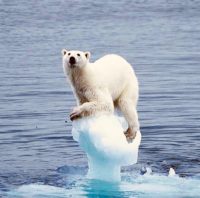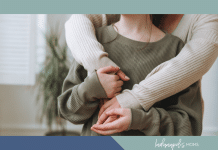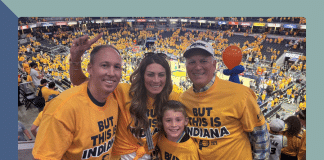Through countless parenting moments and trials to ensure our children are happy, healthy, and safe, we aim to provide with great endurance, what we believe our children and grandchildren deserve. We birth, nurse, and care for our children; we play, we draw, we paint, we dance, we run, we teach, we read, we cook, we clean. Tiring, tedious work –unpaid, sometimes unnoticed and unappreciated, we continue because it’s our prerogative and it is our responsibility.
“Watch this? Can I try? Just one more time?” The authenticity of our smile fades, realization it isn’t easy takes a toll, but we are patient, resilient, and triumphant – we are moms, dads, guardians, caretakers, grandparents, friends, loved ones, and citizens.
Sometimes the road less traveled is the best road to take.
 I am encouraging our children to choose to make a difference, to be an active participant in their community. To motivate them to make decisions that will not harm their physical, mental, and emotional health, or our environment, and to be aware of choices and consequences. Not only is this good for them, but it is also good for the planet, and it is good for others.
I am encouraging our children to choose to make a difference, to be an active participant in their community. To motivate them to make decisions that will not harm their physical, mental, and emotional health, or our environment, and to be aware of choices and consequences. Not only is this good for them, but it is also good for the planet, and it is good for others.
Our children are empowered with an understanding of the adverse effects of waste, and comprehend what it is doing to our planet, full disclosure— the global waste and pollution crisis amongst us, and the harm it is causing to our ecosystems; this should be common knowledge, not a privilege.
Each year across the globe, 300 to 400 million tons of heavy metals, solvents, and toxic waste are dumped into the world’s waters, and 2.12 billion tons of waste is sent to landfills.
One-third of all global food production is wasted.
Approximately one ton of trash is produced by every person on the planet each year. Some statistics say that 99% of what consumers purchase is thrown away in less than six months.
Where is away? Ponder for a moment, when one throws something away – Where is away?
By definition, away, is to set apart, aside, isolate, elsewhere. Something that should not be easily forgotten, but is, with each toss – there is no such thing as “away.” All things must, in fact, go somewhere; the option, to throw it away, is ironic and non-existent.
The waste that we threw away is still here, in some form.
Aluminum can take anywhere from 80-200 years to decompose. Polystyrene 500 years. Glass millions of years. Some plastic –never.
According to scientists, every piece of plastic ever created still exists on Earth. Single-use plastics are being used too frequently without thought. Plastic, it’s inexpensive and available. It’s everywhere. It’s in our water, on our plates, in our beds.
It estimated that humans produce almost 20,000 plastic bottles every second; most end up in our oceans and landfills, less than 27% are recycled. Worldwide 4 trillion plastic bags are used annually, and only 1 percent is returned for recycling. Polystyrene on a production scale of several million tons per year contributes to 25-30%. An average American throws away approximately 185 pounds of plastic.
In the United States, 70% of all plastic is sent to landfills and not recycled.
I had an encounter with plastic waste upon descent while traveling domestically with a well-known airline. The flight attendant walked past, “Excuse me,” I asked, “may I have those?” I pointed to the plastic bag in her hands filled with plastic trail mix snacks bags.
“These are empty.”
“Yes, I know. I want the empty ones.”
“The trash?”
“Yes, I can recycle it. Unless you are going to.”
“These?” She held up the bag. “No, we don’t recycle these.” No remorse. No embarrassment— just matter of fact.
I reflected how many flights a day, a year, a flight attendant had walked down the aisle after aisle, carrying packaging waste to be sent to our landfills. She walked to the front of the plane only to return a few moments later and told me I could have the trash.
I tucked away the undocumented plastic waste under the seat into my purse that was also filled with items being taken home to recycle. An unopened plastic bottled water that was given to me without consent. It was waiting on the plane in the assigned seat once boarded. Two plastic straws that were also unrequested, a trail mix bag from this flight, and the last. Two plastic mint wrappers from the previous night, two empty plastic liner coffee cups, two plastic coffee lids, and one energy bar wrapper, a banana peel and an apple core—which I had eaten for breakfast and lunch.
Tom Szacky, author of the book: The Future of Packaging, and founder of Loop™ and TerraCycle™ said:
“We vote multiple times a day for the future we want, based on the things we buy.”
I have to agree with Tom.
We make choices each day, possibilities are frequent and forthcoming, as we nod yes or no. What we brush our teeth with, wash our hair, dine in or dine out, what to wear, where we shop – for items, that we inevitably have to have. Preferences are made every second.
“Look, mommy,” our five-year-old will say, excited to point out a recycle bin. Our kindergartener likes to use his cotton-zipper bag in his classroom in place of a single-use plastic bag. We are conscious consumers and aware of the harms of waste – and because of this, our family is choosing to make conscientious choices. Avoiding items that are in non-reusable or non-recyclable containers is a habit.
Stainless steel and glass water bottles are part of our every-day lives. Our children’s lunches are packed in all reusable eco-containers. Consistently our children choose to bring home any uneaten food to compost vs. disposing of it in the school’s café. Together we collect items from fellow neighbors, friends, and students that their school or household is not equipped to recycle. Children deserve to learn to respect Earth.
Children deserve to learn to respect Earth.
I applaud our children and those around us who put forth efforts to help the environment and inadvertently, are helping each other. Choosing to invest in our future. We all can do better as a society, to make this a new norm— to demand the best for both our children and our children’s children. Change is imperative. Time is of the essence.
Scientists predict by 2050, there will be more plastic in the ocean than fish. One million species of plants and animals are at risk of extinction reveals a 2019 report by the United Nations. Reduction of consumption of products that generate waste materials and conserving energy, soil, water, and air is a necessity.
 Just this week, a new study warns, that the rising temperatures in the Arctic will cause global sea levels to rise much faster than previously concluded. Now scientists say, by the end of this century, sea levels will rise 6.6 feet, and major cities such as New York and Shanghai will be effected – displacing 187 million people.
Just this week, a new study warns, that the rising temperatures in the Arctic will cause global sea levels to rise much faster than previously concluded. Now scientists say, by the end of this century, sea levels will rise 6.6 feet, and major cities such as New York and Shanghai will be effected – displacing 187 million people.
As an individual, a mother, and someone who has learned from her mistakes and taken responsibility for our unknowing and heedless actions –I chose to make a change. A decision that will affect not only our own children but everyone our lives touch.
What message do you want to leave your loved ones?
I employ you to take into account, the popsicles cased in plastic on top of more plastic inside more plastic. Seek alternatives. Avoid products that lead to more pollution. Exam the materials used in daily activities. Give thought, look around, be aware – think before you swipe. Be smart. Research. Educate yourself on consumer products and manufacturing. Skip on the convenience. Buy fresh. Grow or make your own. Reuse everything. Use less. Become an expert; become skilled at living low-waste. Be a hero.
Consider the planet and our future, the next time you make a purchase. Consider the contents of the product as well as the packaging of the product, can it be reused, can it be recycled – where the waste will go?
Ask yourself before you place the item in the cart, are you prepared for the consequences? Consequences that will unavoidably affect not one person, but our children, our communities, and future generations.
This is our choice. Our vote. Choose Earth.









